Aldous Leonard Huxley, one of the most important 20th century British thinkers and writers, was born in England on July 26, 1894, the third son of Leonard Huxley, a writer, editor and teacher, and Julia Arnold, also a teacher. Huxley grew up in a family of people involved in science, art and literature on both his mother’s and father’s sides.
His grandfather, Thomas Henry Huxley, was the greatest proponent of Darwin and his theory of evolution. His mother, a teacher, was the granddaughter of the famous educator Thomas Arnold, niece of the poet Matthew Arnold, and sister of the English novelist Humphrey Ward. Huxley’s father, a teacher, was also the owner and editor of a magazine. Huxley’s older brother, Sir Julian Huxley, was a famous biologist who advocated eugenics. Eugenics is the science that deals with all the factors that improve the innate qualities of a generation. Eugenists argue that scientific selection would be more useful than the natural selection in evolutionary theory. Julian Huxley was the first biologist to reject the concept of race, and was also the director general of the United Nations Educational, Scientific and Cultural Organization (UNESCO) at the time. His half-brother Andrew was a professor who won the Nobel Prize in physics and medicine in 1963. At a time when modern thought was being promoted by the majority of society in Europe, it is impossible for such a family and their social circles not to have influenced Huxley’s view of the world and life.
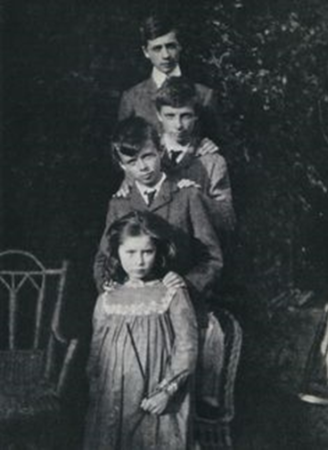
Huxley receives his first education within the family and then continues his education at Eton, one of England’s well-established schools. Here, in addition to improving his command of the English language, he closely followed the latest developments in science. However, the unfortunate events he experienced during these years left indelible marks on his life and influenced the formation of his general pessimistic Weltanschauung (world view), as he later stated many times.
Huxley is deeply affected by the loss of his mother to cancer at the age of fourteen, the weakening of the father-son relationship, which is almost non-existent in material and spiritual terms for the rest of his life after his father moves to London and remarries, the loss of his eyesight at the age of sixteen as a result of an eye disease, and the suicide of his older brother Noel Trevelyan, who is a few years older than him. The expectations created by being from such a famous family put great pressure on him and his brother. Unlike his brother Trev, who became depressed and committed suicide due to the troubles caused by this pressure, the author prefers to write works that emphasize self-realization.
“Chronic remorse, all moralists agree, is a very undesirable emotion. If you have behaved badly, feel remorse, make amends as best you can, and try to behave better next time. Don’t brood over your mistake for whatever reason. The way to be clean is not to wallow in the mud.” (From the Foreword to Brave New World)
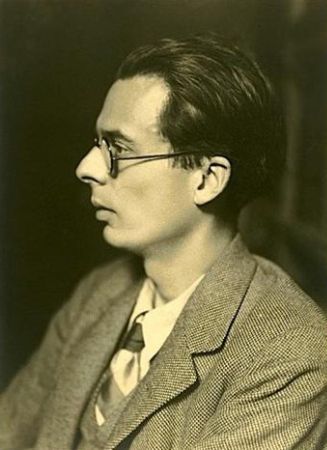
Although Huxley had intended to study medicine, especially because of an eye condition he had suffered, he was forced to turn to literature. However, his interest in science, especially biology, pharmacology and genetics, which were still in their infancy at the time, continued. In these living conditions, Huxley, on the one hand, witnessed the scientific work of so many scientists around him and wrote academic articles expressing his thoughts on these studies and developments, and on the other hand, he began to fictionalize the cause and effect relationships he obtained from these studies.
In 1913, after a partial recovery from the condition that had left him with almost no vision for several years, he entered Balliol College, Oxford University and studied English Literature. He volunteered for the British Army during World War I, but his request was rejected due to his eye condition. In the years to come, Huxley would take an active role in anti-war organizations. At school, even though he had to depend on a magnifying glass, he was very successful with his knowledge and achievement. While his friends are drafted into the armed forces due to the world war, he devotes himself to his studies.
Huxley spent the war years with the Bloomsbury Society at the home of Lady Ottoline Morrell at Garsington Manor near Oxford. Here he met important writers such as John M. Keynes, Virginia Woolf, Lytton Strachey, Bertrand Russell. The Bloomsbury Society is an intellectual group, mostly from upper-middle class families, discussing art, literature, philosophy, politics, etc. in the early 20th century.
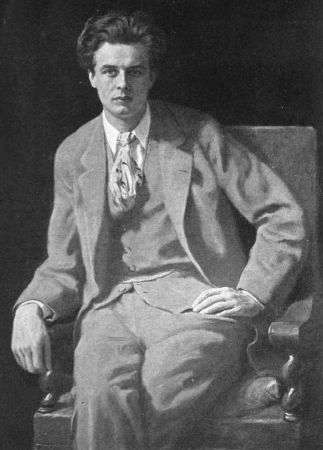
After graduating with a degree from Oxford, Huxley works in many jobs; he is in financial difficulties; when he is about to go bankrupt, he borrows money from his father and pays it back. After this incident, his ties with his father are severed for the rest of his life. Perhaps this relationship with his father is the reason for the approach questioning family ties in his works.
It was also here that Huxley met D. H. Lawrence, with whom he would later become close friends, and exchanged literary ideas. In 1916, Huxley publishes his poems in his first book, The Burning Wheel. In 1919, literary critic John Middleton Murry, the editor-in-chief of the Athenaeum literary magazine, hires Huxley to its staff. In the same year, he married Maria Nys, a Belgian woman he had known in the Bloomsbury Society. Their only child, Matthew Huxley, was born in 1920. During their thirty-five years of marriage, his wife Maria managed much of Aldous’ correspondence; she served as his typist and secretary. She organized house parties that brought him into contact with leading thinkers, artists, writers and scientists, and took care of Huxley’s health, who was often ill.
In 1920 he publishes Limbo, a collection of short stories. The family spent these years between London and Europe, mostly in Italy. In the mid-1920s, they traveled to different parts of the world, especially India and the USA. Before these trips, Huxley works on Crome Yellow, a parody of his experiences in the Bloomsbury Society and a critique of the intellectual circles of the period. Published in 1921, this book about ideas, about things that conflict with or betray ideas, sells well enough to motivate him to write more.
“Everything that has been achieved in this world has been the work of madmen. … Whenever a choice has had to be made between the rational and the insane, the world has followed the latter without hesitation. For the madman appeals to the elemental, to passion and instinct; philosophers appeal to the superficial and superfluous – to logic.” (Crome Yellow)
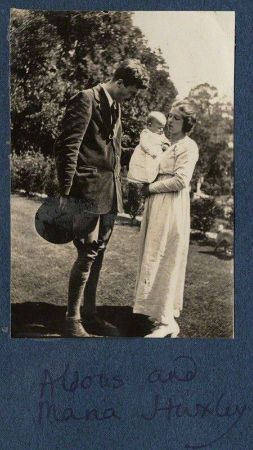
In 1923 Antic Hay was published, depicting the cultural elite as aimless and selfish. His 1925 novel Those Barren Leaves, a satire of a group of intellectuals gathered in an Italian palace to relive the splendor of the Renaissance, is considered the return of philosophy to the English novel.
Point Counter Point (Sound Against Sound), his first novel of ideas, in which he presents portraits of figures shaping British society and art, was published in 1928. In the novel, which further cemented his reputation, he presents the reader with a wide spectrum of contemporary society through a group of very different characters. The novel’s characters are characterized and individualized by easily recognizable physical, mental, emotional, psychological and moral traits. Each of them is endowed with differences in social status, political views, wealth, etc.
Lucy continued: “Today’s life means living fast. You can’t drag a carload of ideals and romantic attitudes along in the age we live in. When one travels on an airplane, one leaves behind one’s heavy belongings. When we lived slowly, that good old-fashioned spirit was a good thing. But now it is too heavy. There is no room for it on the airplane.” (Point Counter Point)
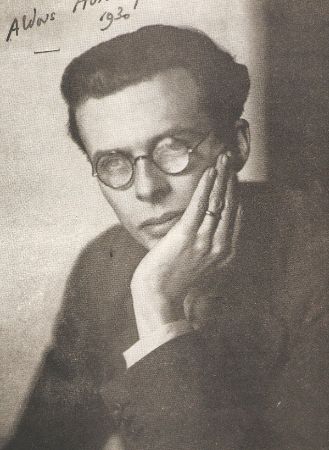
The work that made Huxley famous worldwide was Brave New World, originally published in 1932. Influenced by Henry Ford’s My Life and Work, which he had read during his trip to America, Huxley established a connection between his experiences in California and what he had read in this book. In Brave New World, which consists of eighteen chapters, the plot takes place in London in 632 AD. The general characteristics of the society living here are expressed from time to time by the omniscient narrator and from time to time by the conversations between the characters. In a highly ironic way, the novel points out that freedom should not be sacrificed for the sake of shallow ideas about progress. In Brave New World, Huxley has brought his thoughts, which he had expressed in his articles and books, to a fictional plane, perhaps revealing his real thoughts, which he had hesitated to express in his prose writings.
After its publication, critics and readers made different evaluations of the novel with different readings. While some, pointing to scientific advances such as biology and genetics, evaluate the novel as a dystopian novel that accurately reveals the developments that may occur in this field in the future and warns that these developments will cause negative reflections on sociology; Others argue that the New World fictionalized in the novel is a stable world that can overcome all the problems that humanity has always tried to solve but could not solve and will not be able to solve in the future thanks to the scientific advancements Huxley fictionalized, and that the fictionalized world should be a utopia, not a dystopia.
“The secret of happiness and virtue is to love what you have to do. That is the purpose of all conditioning: to make people love their inevitable social destiny.” (Brave New World)
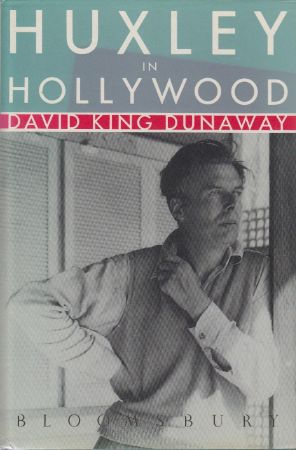
Huxley’s discovery of pacifism and mysticism gave his life a different meaning, and Eyeless in Gaza, which he wrote especially around these themes, was published in 1936. The novel, which bears the traces of Huxley’s early works, also forms a basis for the philosophical foundation of his later texts. In 1937, Huxley and his family move to the United States, where he lives until his death. Huxley spends some time in New Mexico. Here he writes essays on morality, politics, religion, etc., which are compiled and published under the title Ends and Means. After Many a Summer Dies the Swan, in which Huxley criticizes American culture in terms of narcissism and individualism, is published in 1938. The story, told through a Hollywood millionaire who fears his impending death, can also be read as a criticism of materialism
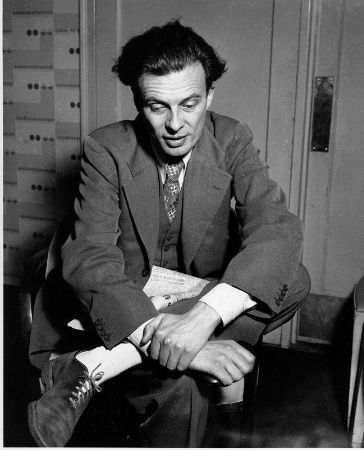
In his 1944 novel Time Must Have a Stop, he tells the story of Sebastian Barnack, a young poet vacationing in Florence with his hedonistic uncle. In 1945, in his 1945 book of essays, The Perennial Philosophy, he expanded on the philosophical themes he had dealt with in fiction. In the book he touches upon Eastern and Western philosophy, mysticism, individual and social morality.
During the Second World War, Huxley worked in Hollywood as a screenwriter for Metro Goldwyn Mayer. He wrote screenplays for film versions of classics such as Jane Eyre, Pride and Prejudice and Alice in Wonderland. He used most of the money he earned to transport Jews and Hitler’s opponents from Germany to the United States to escape Hitler’s persecution.
Huxley, who was very interested in philosophy, became friends with the Indian philosopher Jiddu Krishnamurti during this period. They discussed philosophical issues and exchanged letters for many years. In 1954, Huxley wrote a foreword to Krishnamurti’s book The First and Last Freedom. The chaotic and harsh climate of the Second World War greatly affected Huxley’s view of life. While people were dying all over the world, Huxley continued to defend pacifist philosophy. Time Must Have a Stop, in which he questions spirituality and criticizes hedonism, is published in 1944.
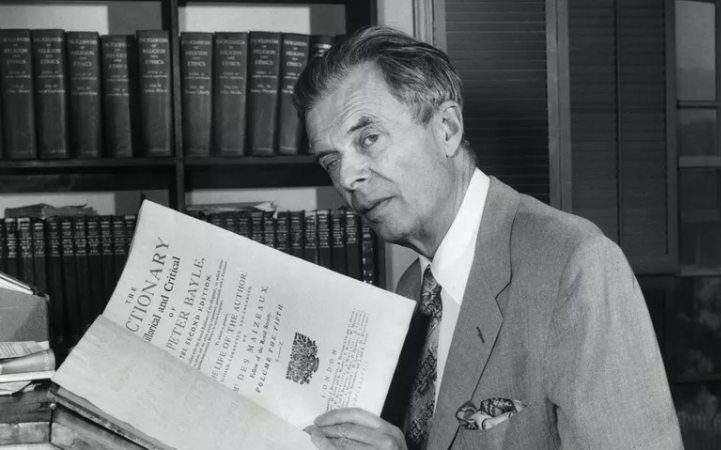
Huxley became famous in the 1950s for his interest in drugs such as mescaline and LSD. Huxley used these substances in a controlled manner until his death and wrote The Doors of Perception, published in 1954, based on these experiences. The Doors music group takes its name from this work.
“I was sitting on the seashore, listening with half an ear to a friend who was fiercely discussing something that only bothered me. I was unconsciously looking at the thin layer of sand in the palm of my hand, and suddenly I saw the extraordinary beauty of each tiny grain, I saw that each particle was made in a perfect geometrical style, with sharp angles, each angle reflecting a bright beam of light, each tiny crystal shining like a rainbow… The beams of light crossed each other and then crossed each other again, exquisite formations of such awesome beauty that they left me breathless… Then suddenly, my consciousness was illuminated from within and I saw vividly that the whole universe was made up of particles, no matter how dull and lifeless they appeared, filled with this intense and vital beauty. For a second or two the whole world appeared in a radiance of splendor. When it faded, it left me with something I have never forgotten, and it still reminds me regularly of the beauty hidden in the momentary fragments around us.” (The Doors of Perception)
The Doors of Perception is one of the most famous texts in the history of psychedelics. In this book, Aldous describes taking mescaline for the first time with Dr. Humphry Osmond in May 1953. The third participant, however, was Aldous’ wife Maria Nys.
The word “psychedelic” was first coined by Humphry Osmond in a correspondence with Aldous Huxley when he was looking for a name for this experience, and then it became part of the literature. It is derived from the Greek words psyche (soul) and deloun (manifestation, to be revealed, manifest or visible). The psychedelic experience is a temporary altered state of consciousness that usually occurs when drugs (LSD, psilocybin, magic mushrooms) are consumed. This movement has influenced many branches of art, from literature to painting and music. Artists who experienced the change in the shape, form, size and depth of surfaces and objects under the influence of hallucinogens, the perception of the world as color or the transformation of emotions and thoughts into shapes and colors, reflected this experience in their works.
In 1953, Huxley and his wife Maria applied for citizenship from the United States. However, Huxley realized that he could not politically fulfill the requirements for citizenship and withdrew his application.
In Brave New World Revisited, a collection of essays published in 1958, Huxley seems to have moved a little away from the pessimism of Brave New World and, especially in the last part of this work, he makes some suggestions for the self-realization of man and thus for the improvement of society. On the basis of these ideas, in 1962 he wrote his last major novel, The Island, which, unlike all other dystopian works, is considered by many critics to be in the classical utopian tradition.
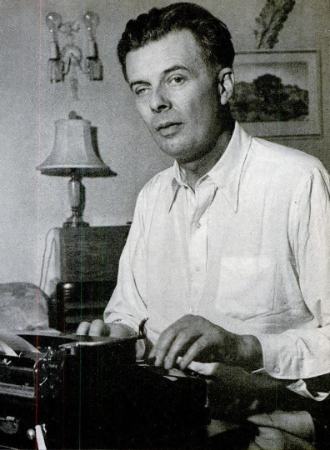
His wife Maria died of breast cancer in February 1955. The following year, Huxley married Laura Archera, an Italian-born violinist and psychotherapist. Huxley’s last novel, Island, written in 1962, is the antithesis of Brave New World. Here drugs and medicines are used to keep people at peace. Individuality is replaced by family and group gatherings. Reproduction is encouraged, in contrast to Brave New World. Huxley shows many of his philosophical and political interests in this novel.
“We neither support nor oppose. We accept it. Just like we accept the spider web in that ceiling carving. If we consider the structure of spiders, spider webs are inevitable. Given human nature, the phenomenon of religion is also inevitable. Just as spiders cannot help making fly traps, humans cannot help creating symbols. This is what the human brain was created for – to translate complex life experiments into organized symbols. Sometimes the symbols reflect the external reality behind the life experiment quite well; this is what science and common sense are made of. Other times there is not the slightest resemblance between the symbols and the external reality; hence paranoia and madness. Often reality and illusion are mixed together; this is religion. Good religion, bad religion – it depends on the composition of the drink.” (Ada)
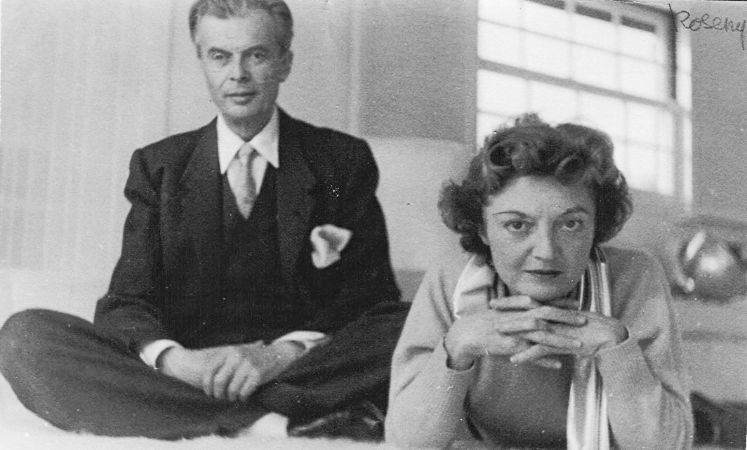
After giving up her music career, Laura Huxley embarks on a therapeutic practice and writes books (You Are Not the Target) that promote self-healing through mental exploration. She then turned her focus to children and founded a foundation on their behalf. But she, too, never gave up her relationship with LSD, even writing that she injected Huxley with the drug at his request when he was dying. Laura Huxley acknowledges that many young people have been harmed by LSD, but she does not give up a benevolent view of the drug: “Sometimes you have a hellish experience and sometimes you have a heavenly experience… It’s like anything else, it’s what you do with it that matters.”
Huxley died of throat cancer in California on November 22, 1963, the day US President John Fitzgerald Kennedy was assassinated. On October 27, 1971, his ashes were interred in Watts Cemetery in Surrey, England. His wife Laura wrote a biography of Huxley after his death in 1968, entitled This Timeless Moment.
Source
The Telegraph, Aldous Huxley did write a great novel – but it was not Brave New World, Philosophy For Life, The Huxleys and the intellectual aristocracy, Aldous Huxley, Sinem Ceylan-Tebip Biology, Aldous Huxley, (Brave New World) Brave New World, Istanbul Sociology, Aldous Huxley, From Polyphonic Music to Polyphonic Novel: Aldous Huxley’s Sound Against Sound, Aldous Huxley’s Utopian World: Brave New World and The Island, Dystopian Systems and Control Mechanisms in Post-Cold War Science Fiction Cinema, Brave New World: An Evaluation of Huxley’s Views on Social Stability, Individual Freedom and Eugenics within the Framework of the Concept of Ambivalence

